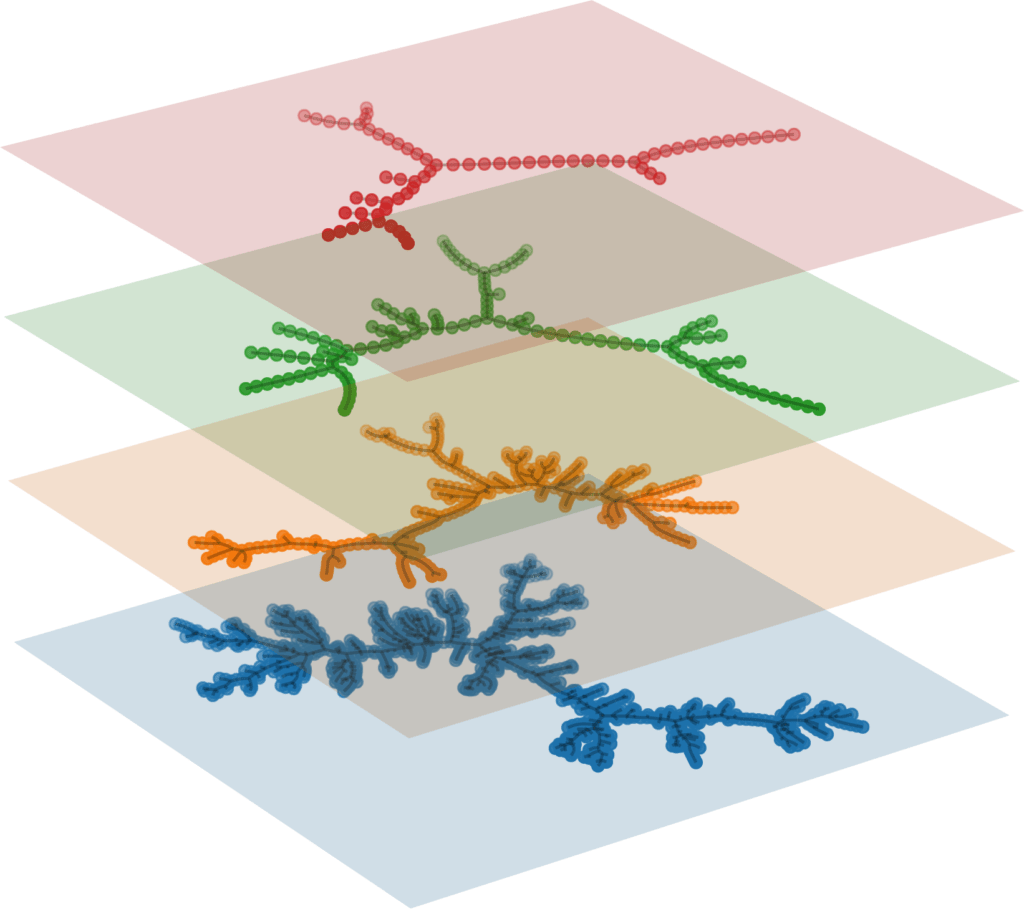To study what happens or could happen in extremely complex networks, such as in a pandemic or in Internet interactions, it is useful to simplify the system to make it manageable and to be able to analyze it.
But how can one find the right vantage point to understand at a glance the salient features of the whole without losing sight of relevant connections?
A team of physicists including Guido Caldarelli, corresponding author of the study and professor of theoretical physics at Ca’ Foscari University Venice, has found a method to efficiently and effectively ‘simplify’ the complex structure of the network. The result has been published in Nature Physics and is thus available to the international scientific community.
The scholars took their cue from the technique that won U.S. physicist Kenneth G. Wilson a Nobel Prize in 1982. Wilson was able to find a theory that could explain how phase transitions, such as the freezing of the surface of a lake or the formation of a traffic column of cars, work.
He invented the mathematical technique of the renormalization group, which allows one to exploit a symmetry of nature (large is similar to small) to predict the behavior of certain systems. Part of this method involves rescaling the cells in which the system is defined with larger and larger cells. At each step we merge both the cells of the system and the variables that make up the system (as in the figure where we have depicted a spin system).
The knowledge of the system once the series of amalgamations is finished is able to tell us how the original system behaves at large distances and toward which fixed points the evolution of the system is headed.
But how do we get the same advantage when the system is not made up of cells like a spreadsheet, but of nodes and relationships between them as is the case in our brains with neurons, in contagion between infected and susceptible individuals, or with interactions on social media?
In real systems very often, if not always, interactions are characterized by the presence of a complex structure of connections that makes them very difficult to analyze.
The knowledge of the system once we finish the series of unifications is able to tell us how the original system behaves at great distances and toward what fixed points the evolution of the system is headed.
But how do we get the same advantage when the system is not made up of cells like a spreadsheet, but of nodes and relationships between them as is the case in our brains with neurons, in contagion between infected and susceptible individuals, or with interactions on social media?
In real systems very often, if not always, interactions are characterized by the presence of a complex structure of connections that makes them very difficult to analyze.
“Directly inspired by ideas from statistical physics,” Caldarelli explains, “we introduced a new renormalization group procedure that has proven essential for efficiently and elegantly discovering the organization at multiple scales of complex networks and for detecting scale invariant features when present. It also defines a universal network scaling procedure that is on the one hand very useful for analyzing large data sets and on the other hand shows us one of the fundamental symmetries of nature.”
Future applications the team will work on include filtering of experimental data masses, exploration of material space, and representation of information from historical archives.

